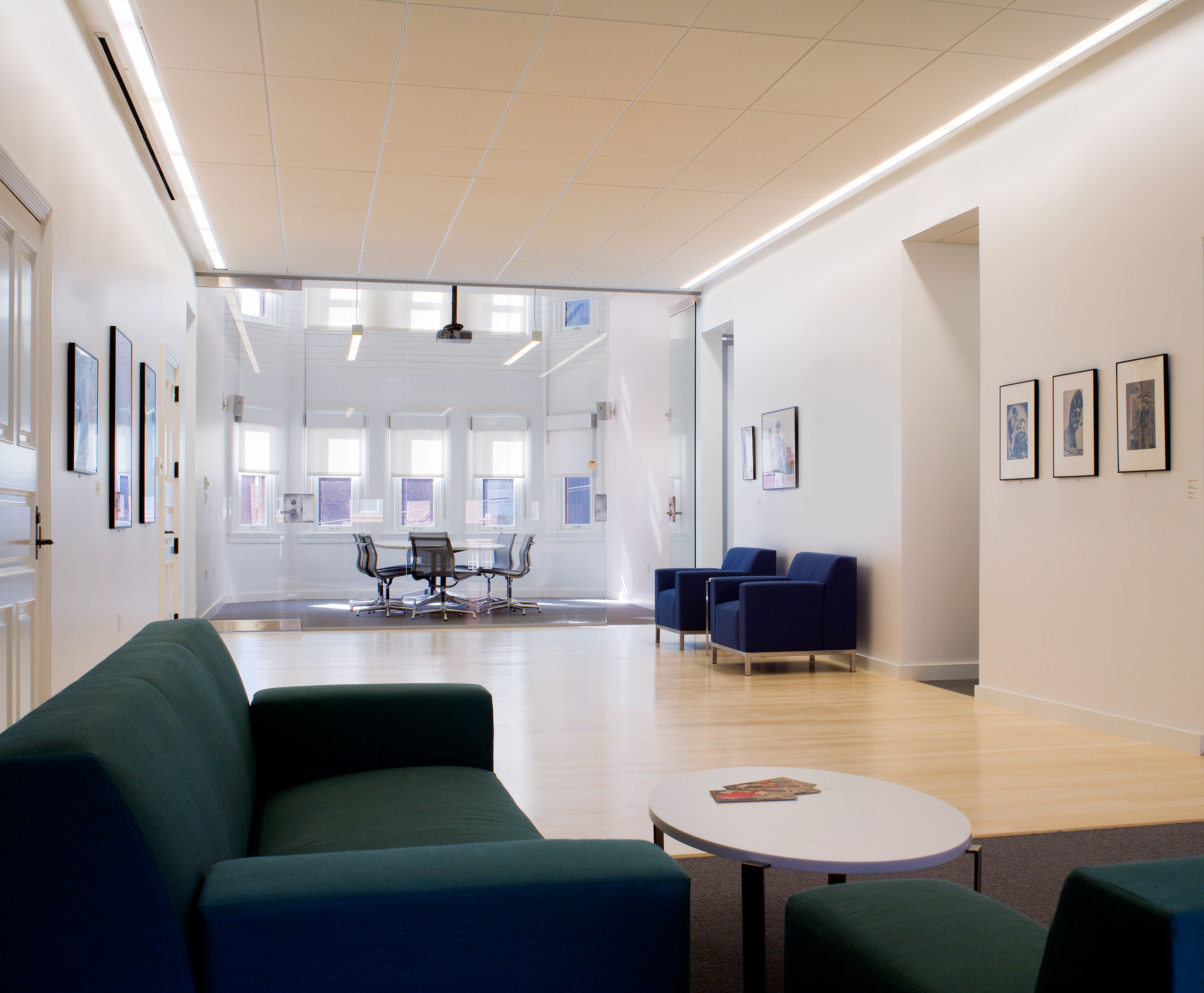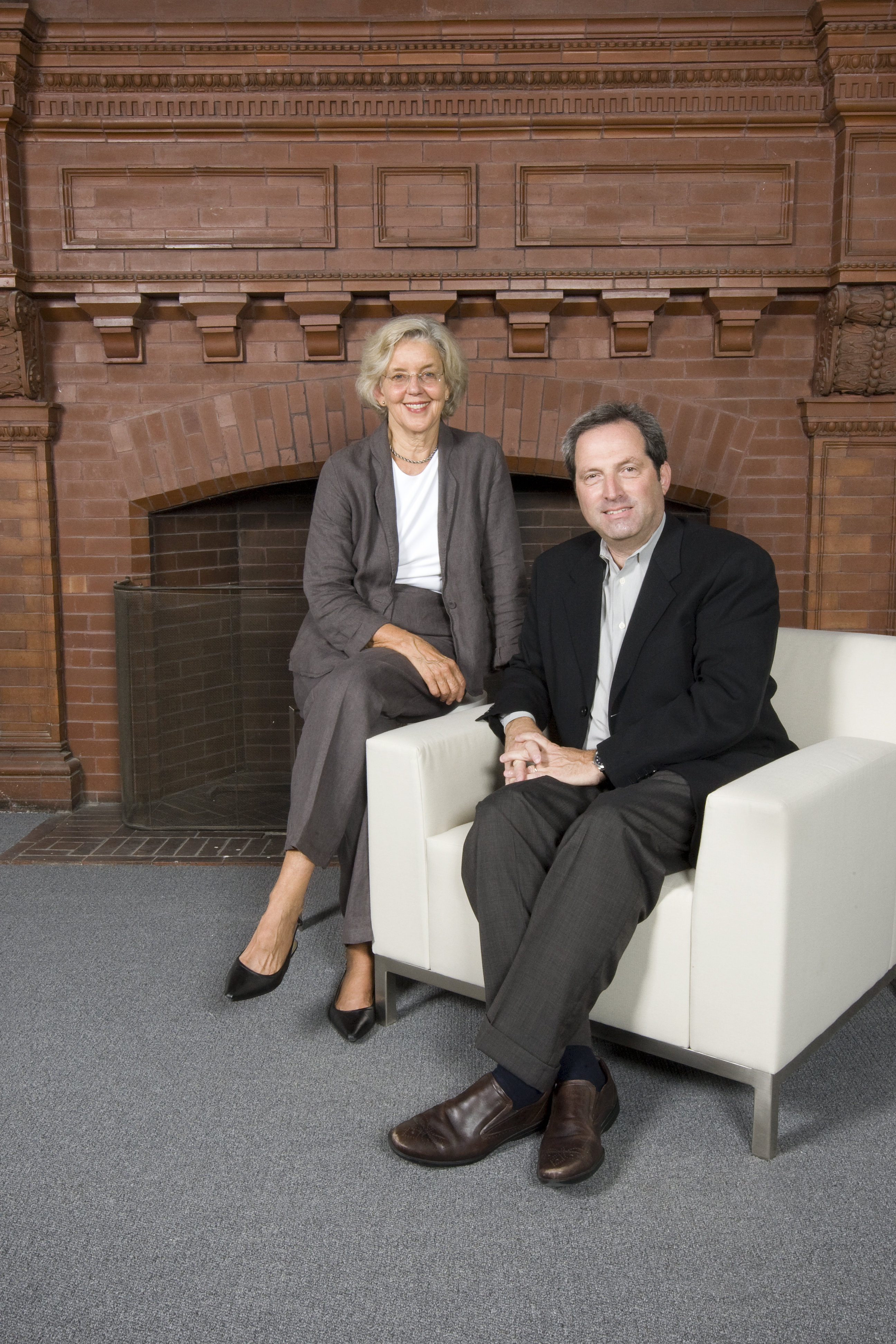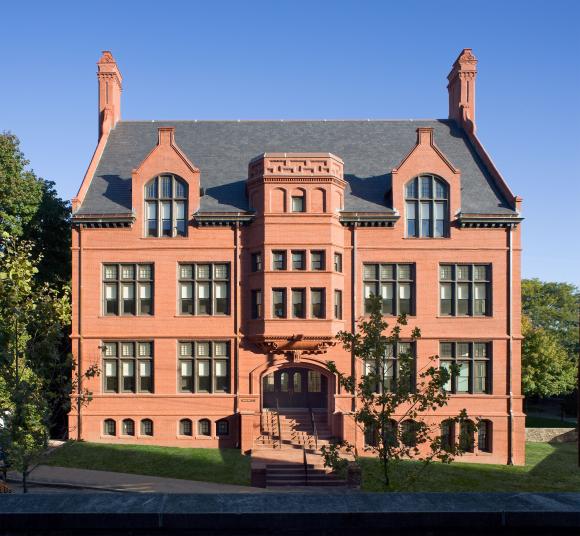PROVIDENCE, R.I. [Brown University] — Brown University will rededicate historic Pembroke Hall as the new home of the Cogut Center for the Humanities and the Pembroke Center for Teaching and Research on Women in a ceremony Friday, Oct. 17, 2008, at 5:30 p.m. in Alumnae Hall, 194 Meeting St. Presiding over the ceremony will be Brown University President Ruth J. Simmons and Chancellor Thomas J. Tisch. Pamela Rosenberg, general director of the Berlin Philharmonic Orchestra and a member of the Cogut Center’s External Advisory Board, will be the guest speaker.
“The new Pembroke Hall will enrich the scholarship and exploration of the humanities at Brown, one of the University’s traditional strengths,” said Provost David Kertzer. “The structure is deeply meaningful historically to Brown and represents our present and future commitment to the humanities.”

Pembroke Hall, the first building erected for the use of the Women’s College at Brown University, has just undergone a $9-million renovationled by architect Toshiko Mori, parent of a Brown graduate. The 111-year-old building has a restored façade and fully renovated interior space, which exposes long-covered portions of the original building. Brightened by glass walls and bamboo flooring, Pembroke Hall now houses a humanities laboratory, conference rooms, classroom space, and offices for visiting and resident scholars.
“The intent of the interior renovation is to maximize light and air as both a physical experience and a metaphorical reference,” Mori said. “By introducing an exceptional quality of light, we hope that this renovation will create a serene atmosphere essential to fostering intellectual activities within the hall.” The project also created dual entrances on Meeting Street and the historic Pembroke Campus, which was developed after the construction of Pembroke Hall.
“The move to Pembroke Hall marks a rich moment in the history of women at Brown,” said Elizabeth Weed, director of the Pembroke Center for Teaching and Research on Women. “Named to honor Pembroke College and the visionary women who funded the building of the Hall, the Center will thrive in a space where, thanks to Toshiko Mori’s luminous design, past, present, and future dynamically converge. The setting is a fitting one for the Pembroke Center’s internationally renowned research.”
“Toshiko Mori’s brilliantly designed spaces provide the perfect juxtaposition of past and future, of individual and collective working space,” said Michael Steinberg, inaugural director of the Cogut Center for the Humanities. “Our program is one of the most thorough in the country, and we now have the space to house our visiting, faculty, and student scholars and to host meetings, lectures, and conferences. Our new Humanities Lab will catalyze Brown’s ongoing initiatives in the digital humanities and arts.”
Public tours will be available on Saturday, Oct. 18, 2008, from 8 to 9 a.m. Pembroke Hall is located at 172 Meeting St.
History of Pembroke Hall

Dedicated on Nov. 22, 1897, Pembroke Hall was the first building erected for the use of Brown’s fledgling Women’s College. Construction of the three-story brick building, designed by architect Alfred Stone, owes much to Sarah E. Doyle, the influential educator and women’s rights activist. With the blessing of then-President Elisha Benjamin Andrews, Doyle and the Rhode Island Society for the Collegiate Education of Women spearheaded the fund-raising effort needed to secure the construction costs. She spoke proudly at the dedication: “We dedicate Pembroke Hall to the service of women who ... shall prove their ability to grapple with scientific problems ... enrich the literature of the world ... practice and teach the Christian spirit of love.” Finished at a cost of $37,601, the new building was named Pembroke Hall after Pembroke College at Cambridge University in England, the college Roger Williams attended. Over the years, Pembroke Hall has served various purposes, from academic classrooms and study areas to administrative uses.
The Pembroke Center for Teaching and Research on Women
Established in 1981 with funding from the National Endowment for the Humanities and the Ford Foundation, the Pembroke Center promotes research on the ways systems of gender, along with systems of race, ethnicity, and class, structure the concrete and symbolic organizations of social and cultural life. It supports fellowship programs for Brown, postdoctoral, and visiting scholars; faculty research initiatives, seminars, lectures and conferences. It houses the celebrated journal differences and the undergraduate concentration in gender and sexuality studies. Its Farnham Archives, housed at the John Hay Library, is a rich resource for scholars.
The Cogut Center for the Humanities
The Cogut Center for the Humanities, established by the University in 2005, supports research, collaboration, and curricular development in the humanities, focusing on interdisciplinary and comparative work across departmental as well as cultural and linguistic boundaries. Its mission is achieved through fellowship programs for Brown University as well as visiting and postdoctoral fellows, faculty working groups, conferences, symposia, seminars, lectures, exhibits, performances, and screenings. The center is named for Craig (’75) and Deborah Cogut in recognition of their generous support.

